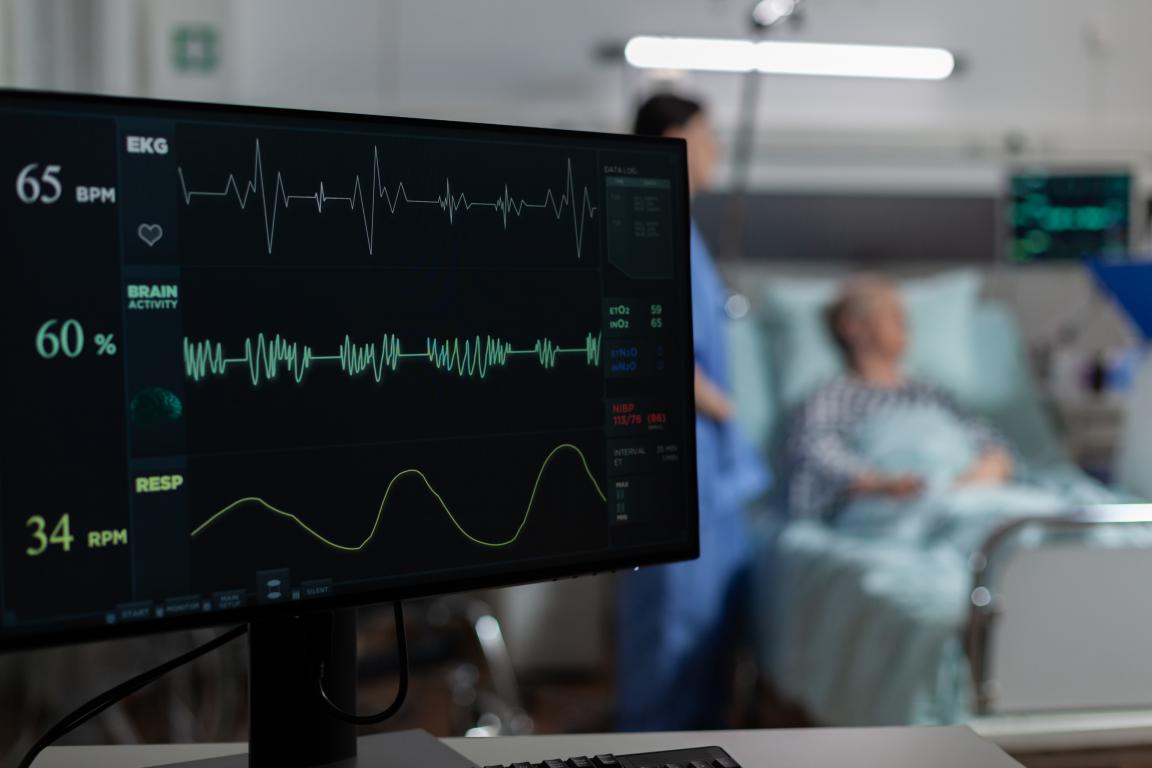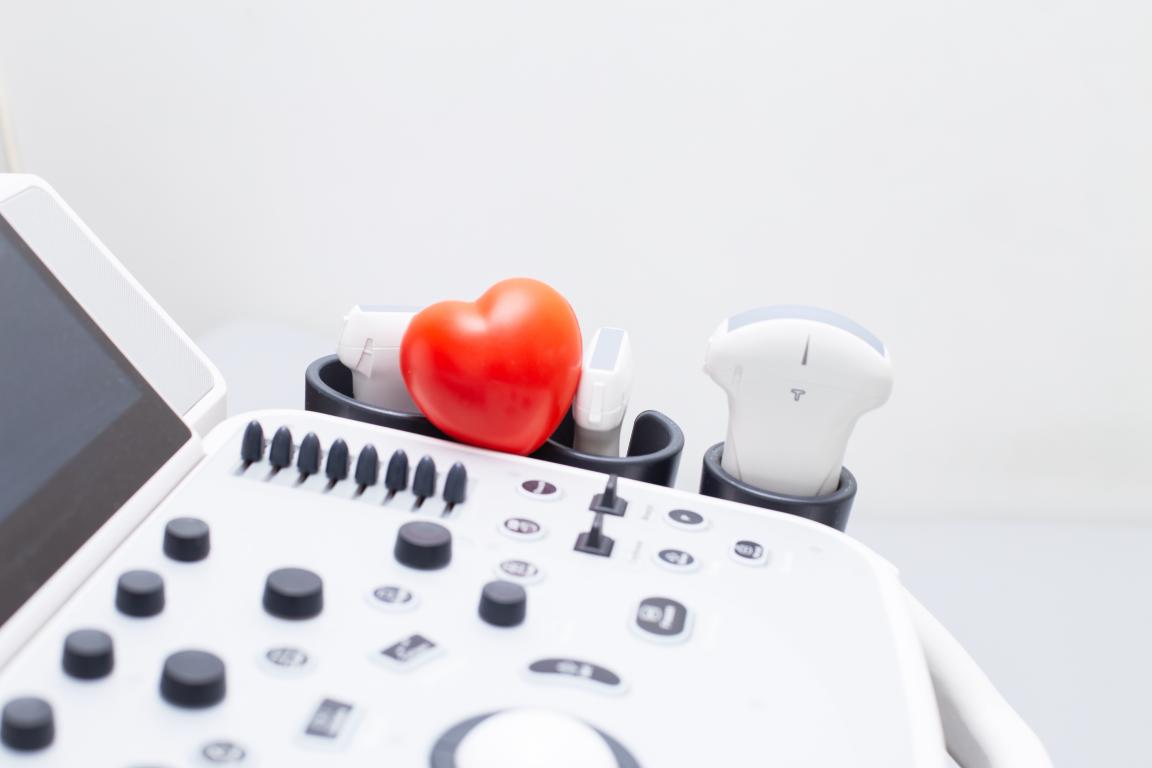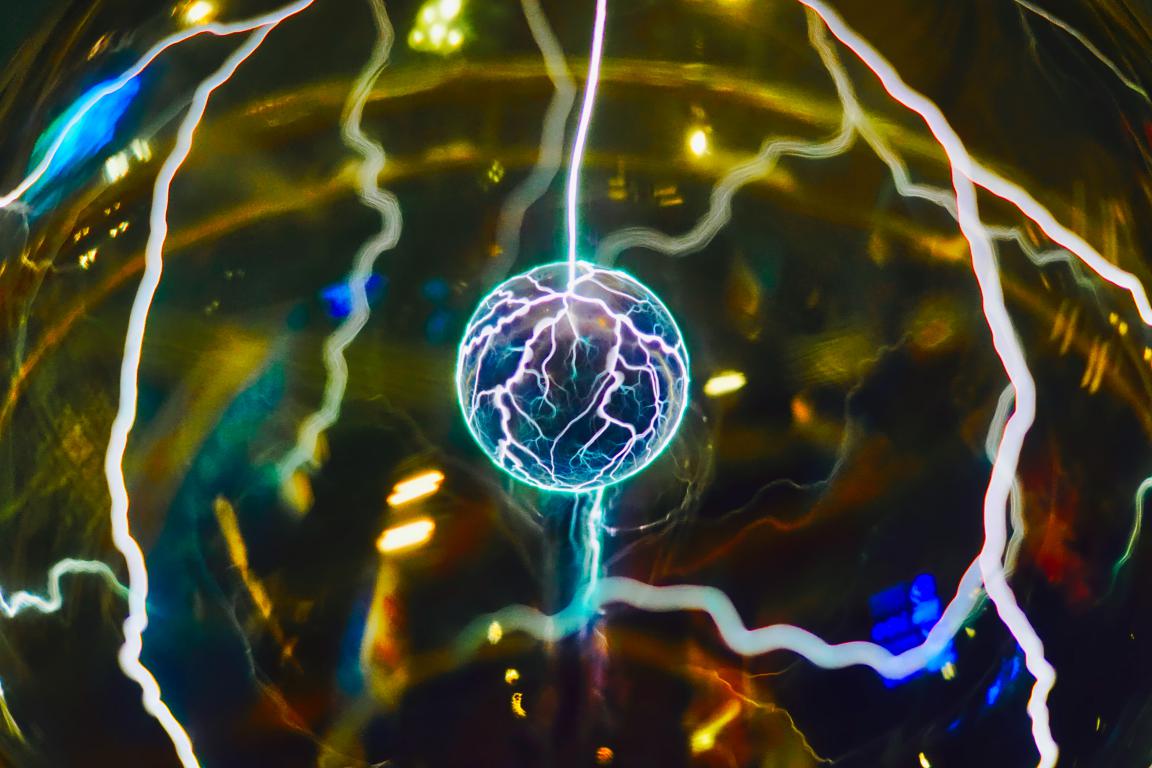Electromagnetic Interference (EMI) and Your ICD: What You Need to Know
When you're living with an Implantable Cardioverter-Defibrillator (ICD), it's completely natural to have questions and maybe even a few worries about how everyday life might affect your device. One area that often comes up is Electromagnetic Interference, or EMI. It can sound a bit daunting, like something out of a science fiction film, but we promise it's not as complicated as it might seem. This guide is here to walk you through everything you need to know about EMI and your ICD, in plain, understandable language. We'll explore what EMI is, where you might encounter it, how it could potentially affect your ICD, and most importantly, what simple precautions you can take to live confidently and safely with your device. You're not alone in this, and we're here to help you feel informed and reassured every step of the way.
Table of Contents
What Exactly Is Electromagnetic Interference (EMI)?
Let's start with the basics. Electromagnetic Interference, or EMI, is essentially any electromagnetic disturbance that interrupts, obstructs, or otherwise degrades or limits the effective performance of electrical or electronic equipment. In simpler terms, it's like a kind of electronic "noise" that can sometimes interfere with how another electronic device works.
You see, modern life is full of electronic devices, from your mobile phone to your microwave, and even large industrial machinery. All these devices produce electromagnetic fields. Most of the time, these fields are harmless and don't cause any issues. However, occasionally, if an electromagnetic field is strong enough or close enough to another sensitive electronic device, it can cause interference.
Think of it like trying to listen to your favourite radio station. If another, stronger signal comes along on the same frequency, it can make your music sound fuzzy or even block it out completely. EMI works in a similar way with electronic devices, including medical implants like your ICD.
For someone with an ICD, understanding EMI isn't about becoming an electronics expert. It's about knowing that these electromagnetic fields exist, where you might encounter them, and how your ICD is designed to handle them. Your ICD is a sophisticated piece of medical technology, built with shielding and programming to minimise the risk of interference. However, being aware of potential sources of strong EMI allows you to take simple, practical steps to ensure your device continues to function perfectly, giving you peace of mind. We're going to break down all of this information for you, making it as clear and straightforward as possible, so you feel completely confident.
How Can EMI Affect Your ICD?
It's a really important question to ask: how exactly can EMI impact your Implantable Cardioverter-Defibrillator? The thought of something interfering with such a vital device can be unsettling, but let's talk through it clearly so you understand the possibilities and, crucially, how rare significant issues truly are.
Your ICD is designed to constantly monitor your heart's rhythm and deliver therapy, such as pacing or a life-saving shock, if it detects a dangerous arrhythmia. It does this by picking up tiny electrical signals from your heart. When your ICD is exposed to EMI, this "electronic noise" can sometimes mimic your heart's electrical signals, or it could potentially overwhelm them.
There are a few ways EMI could theoretically affect an ICD:
-
Temporary Pacing Inhibition or Asynchronous Pacing: This means the ICD might momentarily stop pacing if it misinterprets EMI as your heart's natural electrical activity. Conversely, it might pace at a fixed rate, rather than adapting to your heart's needs, if the EMI prevents it from sensing your heart's rhythm properly. For most people, temporary pacing changes wouldn't be life-threatening, but they could cause symptoms like dizziness or light-headedness.
-
Inappropriate Shocks: This is often the biggest concern for people. In very rare cases, strong EMI could be misinterpreted by the ICD as a dangerous heart rhythm (like ventricular tachycardia or fibrillation). If this happens, the ICD might deliver a shock when it's not actually needed. While this is certainly an unpleasant experience, it's important to remember that ICDs have sophisticated detection algorithms and safety features built in to try and prevent this from happening.
-
Reversion to Safety Mode: Some ICDs are programmed to revert to a "safety mode" if they detect significant, sustained EMI. This is a protective measure, typically causing the device to pace in a basic, fixed mode to ensure a stable heart rate until the interference source is removed.
-
Reprogramming or Damage to the Device: This is extremely rare. For most everyday sources of EMI, there's virtually no risk of your ICD being reprogrammed or physically damaged. It would take a very powerful and direct source of EMI to cause this, far beyond what you'd typically encounter.
It's absolutely vital to understand that your ICD is built with remarkable engineering and protective features. Manufacturers and medical professionals are highly aware of EMI, and devices undergo rigorous testing to ensure they are robust. The risk of serious interference from common household items or everyday environments is very low.
Medical professionals will always take EMI into account when programming your device, often setting it to be less sensitive to electrical "noise" that isn't from your heart. This helps to filter out potential interference.
The key takeaway here is not to be overly anxious. While EMI is a real phenomenon, your ICD is designed with your safety in mind. Knowing about potential sources simply empowers you to make informed choices and take simple precautions, which we'll cover next. This knowledge is about confidence, not fear.
Common Sources of EMI: What to Look Out For
Now that we understand what EMI is and how it could theoretically affect an ICD, let's look at the actual sources you might encounter in your daily life. It's helpful to categorise these into a few areas, from everyday items to more specific environments and even medical procedures. Remember, for most of these, the risk is either very low, or precautions are straightforward.
Household Items and Everyday Electronics
The good news here is that most common household electronics pose little to no risk to your ICD when used normally. These devices produce very low levels of EMI that your ICD is well-shielded against.
-
Mobile Phones and Cordless Phones: These are generally safe. The advice is typically to keep them at least six inches (about 15 cm) away from your ICD implant site. Avoid carrying your mobile phone in a shirt pocket directly over your device. Using them for calls by holding them to the ear on the opposite side to your ICD is a good practice.
-
Microwave Ovens: Completely safe to use. The electromagnetic fields are well-contained within the oven itself. Standing a normal distance away while it's operating is perfectly fine.
-
Televisions, Radios, Computers, Laptops, Tablets: These devices pose no risk. Use them as you normally would.
-
Electric Blankets, Heating Pads: Generally safe. The fields they produce are usually not strong enough to cause interference.
-
Kitchen Appliances (Blenders, Toasters, Coffee Makers, Electric Kettles): These are perfectly safe to use.
-
Hair Dryers, Electric Shavers, Electric Toothbrushes: These are fine for personal use. Keep them at a reasonable distance (a few inches) from your ICD site, which you'd naturally do anyway.
-
Remote Controls: Pose no risk.
-
Wireless Internet (Wi-Fi) Routers: Emit very low levels of EMI and are considered safe.
Industrial Equipment and High-Voltage Lines
This is where the potential for stronger EMI increases, so awareness and caution are more important.
-
Heavy Machinery and Power Tools: Equipment like arc welders, industrial magnets, large electric motors, and some power saws can produce significant EMI. If you work in an environment with such equipment, or are a hobbyist who uses them, it's crucial to discuss this with your cardiologist. Specific safety guidelines, including maintaining greater distances, might be necessary. It's often recommended to avoid direct contact or sustained close proximity.
-
High-Voltage Power Lines and Transformers: Standing directly under or very close to high-voltage transmission lines or large electrical transformers for prolonged periods can expose you to stronger electromagnetic fields. While walking past them is generally fine, it's wise to avoid lingering in their immediate vicinity.
-
Generators: Large electrical generators can produce significant EMI. Again, maintain a reasonable distance when they are operating.
-
Radio and TV Transmitters: The antennas of large radio and television broadcast transmitters emit very strong electromagnetic fields. Avoid getting close to these installations.
Security Systems and Public Spaces
You'll encounter these in everyday life, and it's good to know the general advice.
-
Airport Security Scanners (Walk-through Metal Detectors and Hand-held Wands):
-
Walk-through Metal Detectors: These are generally considered safe for ICDs. You can usually walk through them at a normal pace. The magnetic field is momentary and not usually strong enough to cause interference.
-
Hand-held Wands: While generally safe, the advice is often to ask the security officer to perform a manual search instead, or to pass the wand quickly over your body without pausing it directly over your ICD. If it must be used, ask them not to hold it stationary over your device for an extended period. Always inform security personnel that you have an ICD. You should carry your ICD identification card, which can help explain your situation.
-
Electronic Article Surveillance (EAS) Systems / Anti-theft Detectors (found in shops, libraries): These are the pedestals you walk between at the entrance/exit of stores. Most ICD manufacturers recommend walking through these at a normal pace and not leaning or lingering in the gateway. The risk is very low if you pass through quickly.
-
Induction Hobs (Cooktops): These can generate stronger electromagnetic fields than traditional electric or gas hobs. The advice is to stand at least 12 inches (about 30 cm) away from the cooking surface while it's in use. Avoid leaning against the hob.
-
Magnets: Strong magnets, even small ones, can interfere with your ICD. Keep magnets at least 6 inches (15 cm) away from your ICD site. This includes things like magnetic therapy products, magnetic clasps on clothing, or strong refrigerator magnets if held too close.
Medical Procedures
This is a really important category, as some medical diagnostic and treatment procedures involve significant EMI that can definitely affect your ICD. It's absolutely crucial to always inform any healthcare professional about your ICD before undergoing any medical test or procedure.
-
Magnetic Resonance Imaging (MRI): This is the most significant source of EMI in a medical setting. Traditional MRI scans are generally contraindicated (not recommended) for people with older ICDs because the strong magnetic fields and radiofrequency pulses can interfere with the device, cause rapid heating of the leads, or even damage the ICD. However, many newer ICDs are "MRI-conditional," meaning they have been specifically designed and tested to be safe under certain MRI conditions. If you have an MRI-conditional ICD, specific protocols must be followed, often involving temporary reprogramming of your device before and after the scan. Always confirm with your cardiologist and the MRI department.
-
Diathermy: This uses high-frequency electrical currents to generate heat in body tissues for therapeutic purposes. It is generally contraindicated for people with ICDs because it can cause severe interference, heating of the device and leads, and permanent damage.
-
Electrocautery / Electrosurgery: Often used during surgical procedures to cut tissue and stop bleeding, these devices generate strong electrical currents. They can interfere with your ICD's sensing and pacing. If you need surgery where electrocautery might be used, your cardiologist and surgical team will work together. Your ICD might need temporary reprogramming before the procedure, and careful monitoring will be put in place.
-
Radiation Therapy: While the radiation itself generally doesn't affect the ICD, the high-energy equipment used can sometimes generate electromagnetic fields that could interfere. Your radiation oncologist and cardiologist will need to coordinate closely to manage any potential risks, including shielding the device or adjusting treatment angles.
-
Lithotripsy (for kidney stones): This uses shock waves to break up kidney stones. Some forms of lithotripsy can interfere with ICDs, so careful evaluation and device management are necessary.
-
Transcutaneous Electrical Nerve Stimulation (TENS) Units: Used for pain relief, TENS units deliver electrical impulses. These can potentially interfere with your ICD if placed too close to the device or leads. Discuss this with your doctor before using one.
-
Therapeutic Ultrasound: High-power therapeutic ultrasound, used for conditions like muscle injuries, should generally be avoided over the ICD implant site. Diagnostic ultrasound (like for imaging organs) is typically safe.
This list might seem extensive, but please don't let it overwhelm you. The main point is awareness. For the vast majority of everyday items, there's very little to worry about. For stronger sources, particularly in medical settings, it's about being proactive, informing your healthcare providers, and following specific guidance. Your medical team is there to help you navigate these situations safely.
Understanding Different Types of EMI Exposure
When we talk about EMI, it's not a one-size-fits-all concept. Electromagnetic interference can come in different forms, and understanding these can help clarify how they might interact with your ICD. While you don't need to be an electrical engineer, a basic grasp of the types of fields can be helpful.
Generally, we're talking about two main types of fields:
1. Magnetic Fields
These fields are generated by electric currents flowing through wires or coils. The stronger the current, the stronger the magnetic field. They are often associated with things that use a lot of power or have motors.
-
How they're produced: Any device that uses electricity will create a magnetic field, but they are particularly strong around large motors, transformers, high-voltage power lines, and induction hobs. Even strong permanent magnets (like those in speakers or magnetic therapy products) produce a static magnetic field.
-
Potential effect on ICDs: Magnetic fields can sometimes temporarily "confuse" an ICD's sensing mechanism or, in the case of a strong static magnet, activate a "magnet mode" in the device. Magnet mode is a temporary change in the ICD's behaviour, usually causing it to pace at a fixed rate and temporarily suspend shock therapy. This is a safety feature used by clinicians to test the device, but it can be inadvertently triggered by external magnets. This effect usually stops as soon as the magnet is removed.
-
Examples: High-voltage power lines, large industrial magnets, MRI scanners (which use incredibly powerful magnetic fields), induction cooktops, security wands.
2. Electric Fields
These fields are produced by voltage and are present whenever there is an electrical charge or a difference in electrical potential.
-
How they're produced: Electric fields are present around any live electrical wire or device, even if no current is flowing. They are particularly strong close to unshielded high-voltage equipment.
-
Potential effect on ICDs: While magnetic fields are generally more of a concern for ICD interference, strong electric fields, especially those associated with large equipment or ungrounded wiring, could potentially contribute to EMI. However, for everyday items, the electric fields are usually well within safe limits.
-
Examples: Unshielded power cables, high-voltage electrical substations.
3. Radiofrequency (RF) Fields
These are a type of electromagnetic field that oscillates at a much higher frequency. They are used for communication and heating.
-
How they're produced: Radiofrequency fields are generated by devices that transmit or receive radio waves, such as mobile phones, Wi-Fi routers, radio and TV broadcast antennas, and microwave ovens. In a medical context, RF fields are a key component of MRI scans and also used in procedures like electrocautery and diathermy.
-
Potential effect on ICDs: RF fields can interfere with the ICD's ability to sense heart rhythms, potentially leading to pacing inhibition or inappropriate therapy. In some medical procedures (like MRI or diathermy), the RF energy can also cause heating of the ICD leads, which can be very dangerous.
-
Examples: Mobile phones, Wi-Fi, radio transmitters, microwave ovens, MRI scanners, electrocautery equipment, diathermy.
The Importance of Distance and Time
Regardless of the type of field, two crucial factors determine the likelihood and severity of EMI affecting your ICD:
-
Distance: The strength of electromagnetic fields diminishes very rapidly with distance. Even moving a few inches or feet away from a source can significantly reduce its potential impact on your ICD. This is why advice often includes maintaining a specific distance.
-
Duration of Exposure: Brief, momentary exposure to a field is far less likely to cause an issue than prolonged, continuous exposure. Walking past an anti-theft detector is different from lingering next to it for several minutes.
Your ICD is incredibly resilient and designed to withstand a significant amount of everyday EMI. The purpose of understanding these different types and factors isn't to make you worried about every electronic device, but rather to empower you with knowledge. Knowing that certain things could be stronger sources of EMI allows you to apply simple, common-sense precautions, ensuring your device works perfectly and you maintain your quality of life without unnecessary anxiety.
Safety Precautions: Living Safely with Your ICD and EMI
Living with an ICD means continuing to live your life to the fullest, and managing EMI is all about sensible precautions, not restrictions. Your medical team will always be your primary source of personalised advice, but here are some general, helpful guidelines to ensure you stay safe and confident.
General Awareness and Communication
-
Always Carry Your ICD Identification Card: This card contains vital information about your device. Show it to airport security, any medical professionals you see (including dentists), and anyone else who might need to know about your ICD. It's a quick and clear way to communicate your situation.
-
Inform All Healthcare Providers: Before any medical or dental procedure, no matter how minor, always inform the healthcare professional that you have an ICD. This includes nurses, doctors, physiotherapists, and even alternative therapists. They need to know so they can take appropriate precautions, especially for procedures involving electricity or strong magnetic fields.
-
Understand Your Specific Device: While this guide provides general advice, specific models of ICDs might have particular recommendations. Your cardiologist will explain any unique considerations for your device. If you have an "MRI-conditional" ICD, be absolutely clear on the protocols required for an MRI scan.
Everyday Precautions
Workplace and Industrial Environments
-
Discuss with Your Cardiologist: If your work involves exposure to heavy machinery, powerful magnets, arc welding equipment, large electric motors, or high-voltage power lines, it's essential to have a detailed discussion with your cardiologist. They might recommend specific safety measures, job modifications, or regular device checks.
-
Maintain Distance: The general rule of thumb is to maintain as much distance as possible from strong EMI sources. For industrial equipment, this distance might need to be several feet or even metres.
-
Avoid Direct Contact: Do not lean against or directly touch equipment that could be a strong source of EMI.
Medical Procedure Precautions (This Cannot Be Stressed Enough)
-
Always Inform the Medical Team: This is the golden rule. Every single time you have a medical appointment, test, or procedure, tell the staff you have an ICD.
-
MRI Scans: If you have an MRI-conditional ICD, strict protocols must be followed. This typically involves specific programming changes to your ICD before and after the scan. If your ICD is not MRI-conditional, you cannot have an MRI. Your medical team will explore alternative imaging methods.
-
Electrocautery/Electrosurgery: During surgery, your cardiologist and surgical team will coordinate to manage your ICD, which may involve temporary reprogramming or specific monitoring.
-
Diathermy and Some Therapeutic Ultrasounds: These are generally contraindicated for people with ICDs and should be avoided.
-
Radiation Therapy: Careful planning and coordination between your radiation oncologist and cardiologist are essential to minimise any potential impact on your ICD.
What to Do if You Feel Symptoms
If you ever feel dizzy, light-headed, experience palpitations, or receive an unexpected shock, move away from the suspected source of EMI immediately. Once you are away from the source and feeling better, contact your cardiologist or electrophysiologist to report the incident. They will want to check your device to ensure everything is working correctly.
Living with an ICD means embracing life with confidence. By being aware of potential EMI sources and following these straightforward precautions, you can ensure your device continues to protect you effectively, allowing you to focus on what matters most: enjoying your health and well-being.
When to Seek Medical Advice
While we've covered a lot about understanding EMI and taking precautions, it's equally important to know when to reach out to your medical team. They are your best resource for personalised advice and support, and you should never hesitate to contact them if you have concerns.
You should definitely seek medical advice in the following situations:
-
If you experience symptoms you believe are related to EMI: This includes feeling dizzy, light-headed, experiencing palpitations, a racing heart, or any unusual sensations while near an electronic device or equipment. Move away from the source immediately and then contact your cardiologist or electrophysiologist.
-
If you receive a shock from your ICD: Any shock, whether you believe it was appropriate or inappropriate, should be reported to your medical team as soon as possible. They will want to check your device to understand why it delivered therapy.
-
If you have questions about specific equipment or environments: If you're starting a new job, taking up a new hobby, or planning to be in an environment with equipment you're unsure about (e.g., strong industrial machinery, unusual electrical installations), contact your cardiologist for guidance beforehand. It's always better to ask and be safe than to worry or take unnecessary risks.
-
Before any medical or dental procedure, regardless of how minor: As mentioned, always inform your healthcare provider that you have an ICD. If they seem unsure about the implications for your ICD, insist they consult with your cardiologist or the device clinic before proceeding. This is especially critical for MRI scans, surgeries, or any procedure involving strong electrical or magnetic fields.
-
If you lose your ICD identification card or need updated information: This card is crucial for communicating your device details quickly and accurately.
-
If you notice any physical changes around your ICD site: While not directly related to EMI, any redness, swelling, pain, or skin breakdown around your ICD incision site should be reported to your doctor promptly.
How to Contact Your Medical Team
-
Know Your Device Clinic's Contact Information: Keep the phone number for your cardiology department or ICD clinic readily available.
-
Explain Clearly: When you call, clearly explain what happened, any symptoms you experienced, and what you were doing at the time (e.g., "I was standing near a large industrial motor when I felt dizzy, and my device alarm went off").
-
Don't Self-Diagnose or Delay: It's tempting to try and figure things out yourself, but with an ICD, it's always safest to consult with the experts. Don't delay seeking advice, especially if you've had symptoms or a shock.
Your medical team is there to support you. They have the expertise to assess your specific situation, check your device, and provide reassurance or necessary adjustments. Building a trusting relationship with them and feeling comfortable asking questions is a vital part of living well with your ICD.
Further EMI Resources
We hope this comprehensive guide has helped demystify Electromagnetic Interference and provided you with clear, actionable information for living confidently with your ICD. Our goal at The Card Project UK is always to empower you with knowledge, helping you feel understood and secure.
For many individuals living with an ICD, having easily accessible personal health information can be a valuable part of their daily routine. While this guide focuses on the technical aspects of EMI, we understand that practical, everyday considerations are just as important for peace of mind. Our website has a dedicated category for ICD Medical ID Cards, designed to help individuals carry their vital device and medical information discreetly and conveniently. These cards serve as a straightforward, non-electronic way to communicate essential details about your condition and ICD in situations where it might be needed most. It’s about ensuring that critical information is readily available, offering an additional layer of preparedness for yourself and for those around you. You can also find further information guides about all aspects of having an ICD.
Further Resources and Support:
For more in-depth information, support, and to connect with others, we highly recommend the following reputable organisations and services in the UK:
-
Pumping Marvellous Foundation:
This is the UK's leading patient-led heart failure charity, offering a wide range of resources and support for individuals living with various heart conditions, including those who may have an ICD as part of their treatment plan. They focus on empowering patients and improving outcomes.
-
Cardiomyopathy UK:
For those whose ICD is related to a cardiomyopathy condition, this charity provides specific support, information, and advocacy, helping patients and families understand and manage their condition.
-
Heart Rhythm Specialist Nurses:
Many hospitals and cardiology departments have specialist nurses who can provide direct support, answer questions about your device, and offer practical advice on living with an ICD. You can usually get their contact details from your cardiology clinic.
-
The Patients Association:
An independent charity working to ensure patients' voices are heard and advocating for improvements in health and social care. They offer general advice and can help you understand your rights as a patient.
-
NHS 111 (Non-Emergency Medical Advice):
For urgent but non-life-threatening medical advice, you can call 111 in the UK. They can guide you on symptoms and direct you to the right service, including how to reach your cardiology team if needed outside of clinic hours.
Living with an ICD is a journey, and having the right information and support can make all the difference. We're proud to be a part of that support network, helping you navigate your health with confidence and clarity.
© 2024 The Card Project Uk Ltd
VAT: 453 2087 06
|







